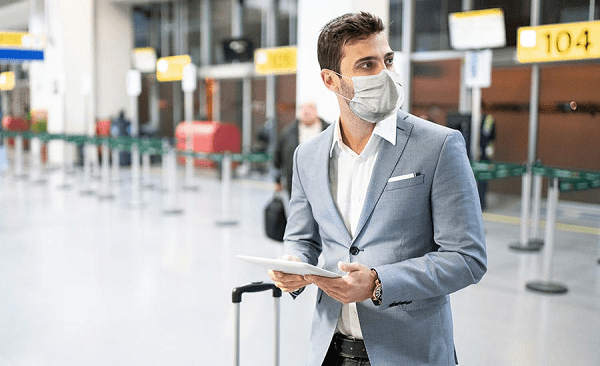
10.07.20 – Security
What security and risk management issues do you need to consider before business travel resumes?
Travel has been limited to prevent the spread of COVID-19; however, as restrictions relax and organizations start to return to operations, we’re beginning to see an increase in business travel. In fact, in May, Business Travel News estimated that 31% of travelers expected to start planning business travel within the next month and 50% of meeting planners anticipated resuming meetings from the months of June to September.
Prior to sending employees on travel for business, there are several factors to consider to protect employees and the business, while ensuring business continuity. During this process, organizations need to take a moment to evaluate challenges and potential changes while employees are traveling, as well as the threats that these potential challenges and changes can impose on business and business travelers. Companies also need to have a clear plan that identifies what useful actions can be taken in the short term to protect the workforce.
The timing, impact and duration of outbreaks of COVID-19 will vary by location and is uncertain. Therefore, it’s important for an organization to be aware of travel conditions and changes by location. A growing number of countries have imposed public health measures to reduce spread of the virus, and these can include border closures and restrictions on domestic and international travel. Mitigation measures can include restrictions on internal movement, bans on mass gatherings, closure of some non-essential facilities and community lockdowns. Additionally, availability of commercial and charter flights, as well as other forms of international and domestic transportation is increasingly limited, and limitations on mobility are likely and have been proven to occur at short notice.
Because COVID-19 is such an evolving situation, it is imperative that organizations implement a comprehensive framework for return to travel just as they do for return to the workplace or operations. International SOS has developed a strategic framework for return to travel, which includes six pillars that address safe business travel during the pandemic.
1. Destination Assessment
There are many factors organizations should evaluate when preparing for employees to travel to a given destination. For essential trips, managers should consider the following potential risks:
- Outbreak at a destination which can occur at any time and escalate rapidly.
- Access to quality medical care at destination.
- Whether the traveler is in a higher risk group for severe disease.
- Bans, quarantines and restrictions at destination.
- Comfort level of the traveler to stay for an extended period at their destination.
- Nature of overall infrastructure and security environment in country.
By using this assessment tool, organizations will be able to determine whether or not their employees can/should travel to a specific country and the risks associated with doing so.
2. Pre-Travel Approval
When deciding whether an employee should travel, organizations should first determine if the travel is essential.
3. Pre-Travel Actions
Once travel is deemed essential, the organization should then create a process that ensures the safety of the employee traveling by evaluating the employees’ fitness to travel, providing a mitigation plan and monitoring compliance with the employee and the destination to which they are traveling.
4. Actions During Travel
During travel, the organization and the traveling employee should continue to monitor the environment and ensure effective, two-way communication throughout the trip. Additionally, the organization should provide medical and security advice/assistance on an as-needed basis. Management should also have access to reliable, nuanced information to inform staff communication and business decision-making.
5. Escalations/Second Wave
As recently seen in many countries, there has been a resurgence or second wave of COVID-19. If this were to happen during travel, the traveling employee and organization must effectively communicate and determine the best course of action, whether that be sheltering in place or an immediate return (if possible). Upon determining the best course of action, the company is then responsible to assist, as needed.
6. Return from Travel
Upon returning from travel, the organization should have a screening program in place for employees. The organization should determine if the employee will automatically self-isolate without symptoms or may return to the office if there are no symptoms. It is important for organizations to avoid the perception of discrimination or prejudice against returning travelers, or employees may be less willing to travel. During this time, the employee and organization should stay in close communication as symptoms can arise at any given time. Additionally, organizations should provide emotional support for the employee, as needed.
As organizations determine what business travel will look like for their company and employees, executives and managers must evaluate Duty of Care programs to ensure the well-being, security and safety of their mobile workforce during these uncertain times. By following the above guidelines, continuously addressing the health and safety of their employees and implementing additional precautions where needed, organizations will not only protect their mobile workforce during the pandemic, but will also build a foundation of trust with business travelers while ensuring business continuity.
